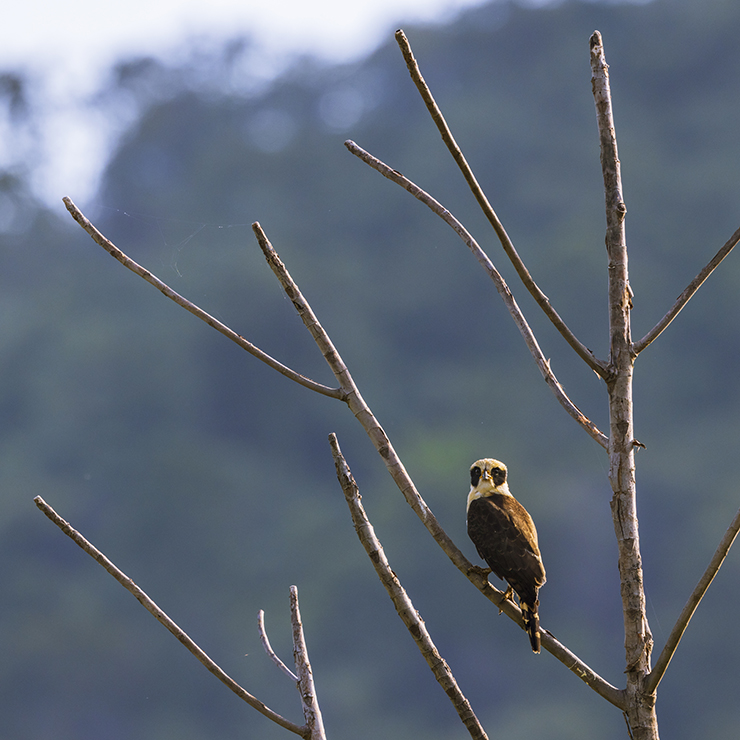
The quiet village of Moco-moco in southwest Guyana was the most southerly point of our sojourn into the landlocked country some months ago. Myself and dear friend Leon blitzed across the savanna in the pre-dawn pinks and purples en route to this village as I strained my eyes trying to pick any birds from the landscape. Much of the land was parched and brown, the vegetation was stunted and windswept. Without a doubt there were birds, but apart from a pair of large and conspicuous Buff-necked Ibis that cooperatively flew past, I didn’t see much.
It was only when we momentarily stopped to make a phone call I began to hear the savanna waking up. A most wonderful, gurgling vocalisation emanating from a nearby tree led us to a pair of Bicolored Wrens. As they postured on twisted boughs, a third bird joined the fray, and they seemed to melt into the tree itself, forming a grotesque sculpture in the middle of nowhere.
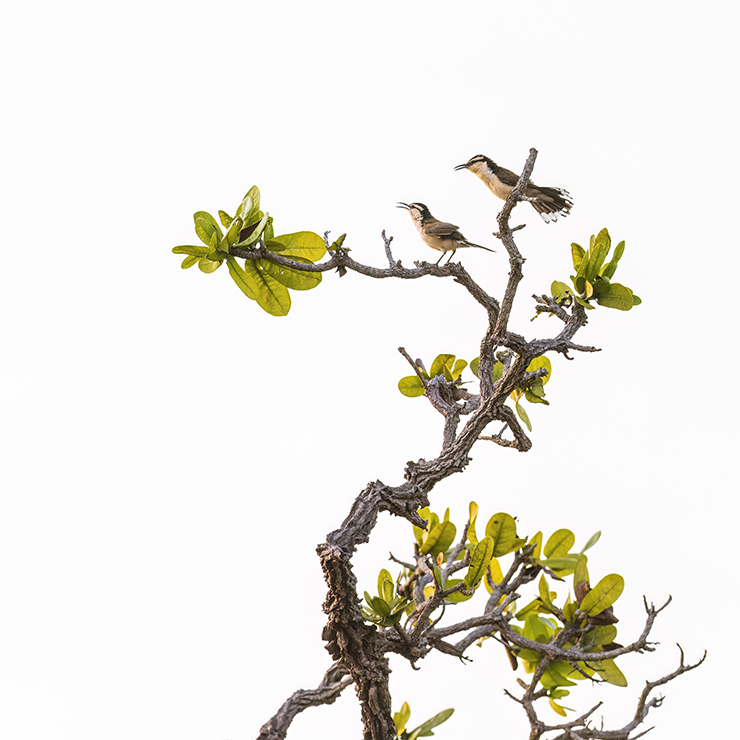
Bicolored Wren
While my preference was to remain motionless in position while the sun gently rose, we had a plan for the morning – one which entailed going further into the village to a small wetland area.
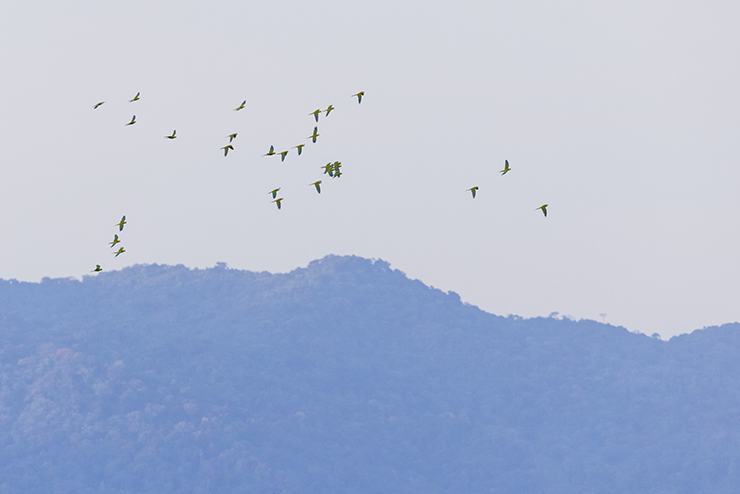
This substantial flock of around 30 Red-bellied Macaws necessitated another momentary pause, however.
Upon arrival to our intended destination, it was clear that there was water nearby. Snail Kites wafted over open areas, while Limpkins targeted the same prey via a different strategy. Other usual wetland suspects lurked in and among the tangled vegetation: Purple Gallinule and Wattled Jacana. A pair of Muscovy Ducks lounged in a distant tree. A White-tailed Goldenthroat, another wetland specialist, perched nearby.
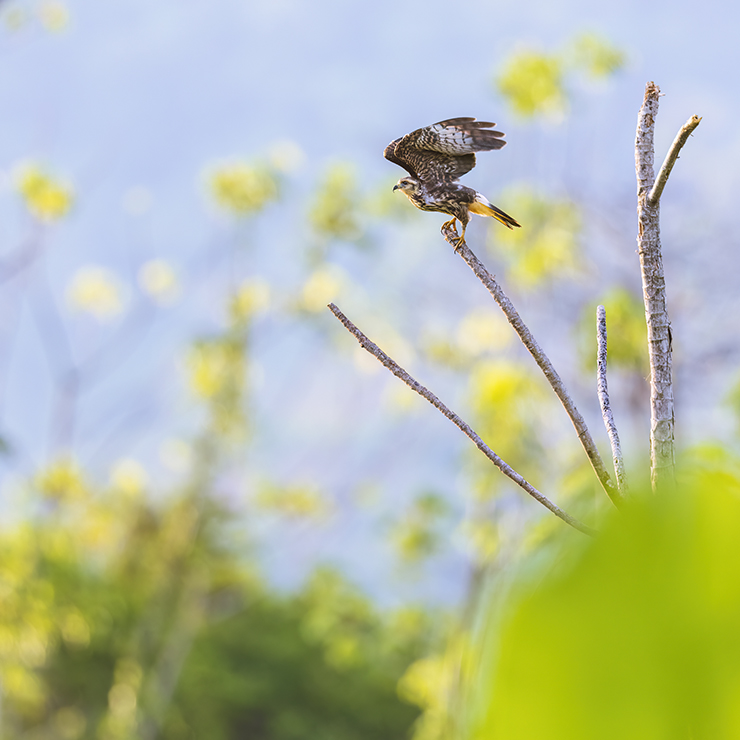
Snail Kite
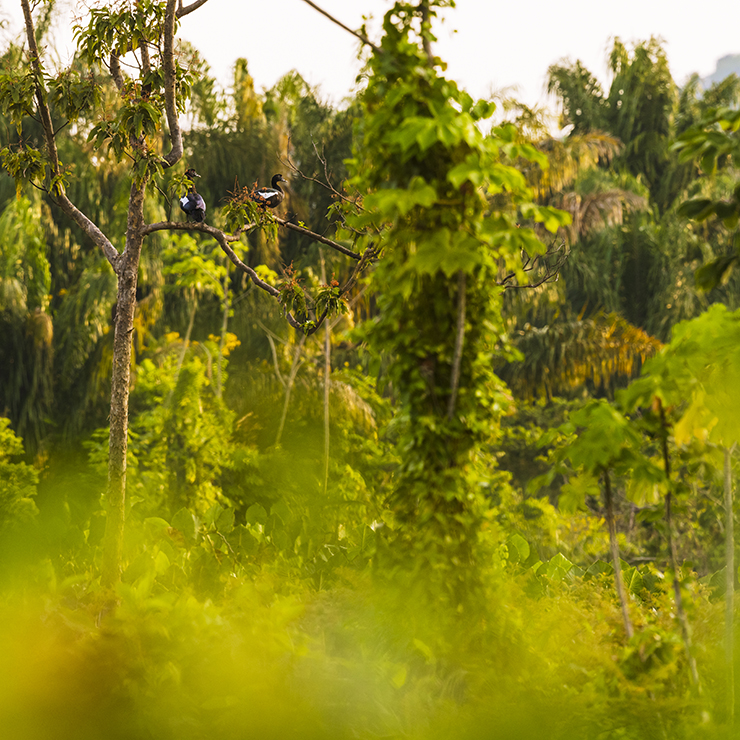
Muscovy Duck
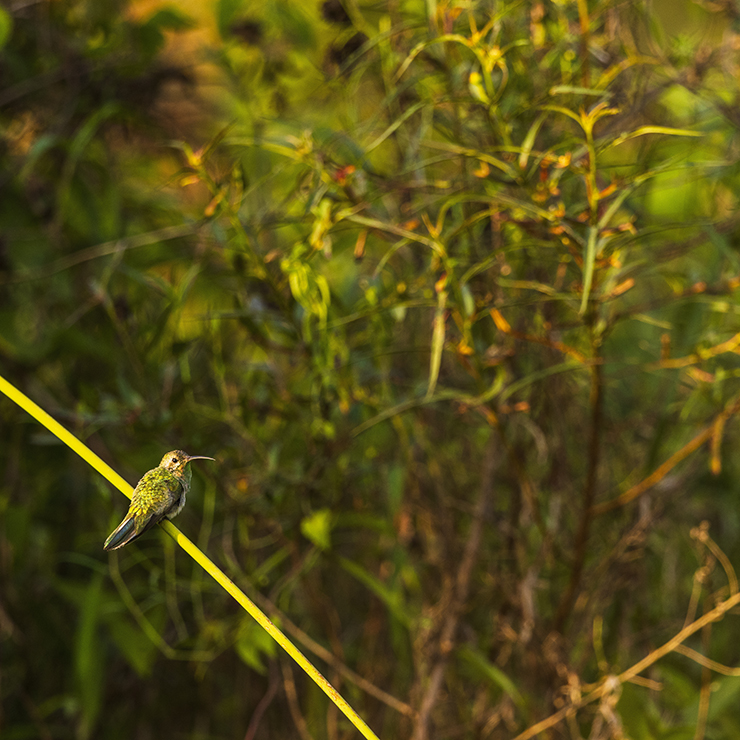
White-tailed Goldenthroat
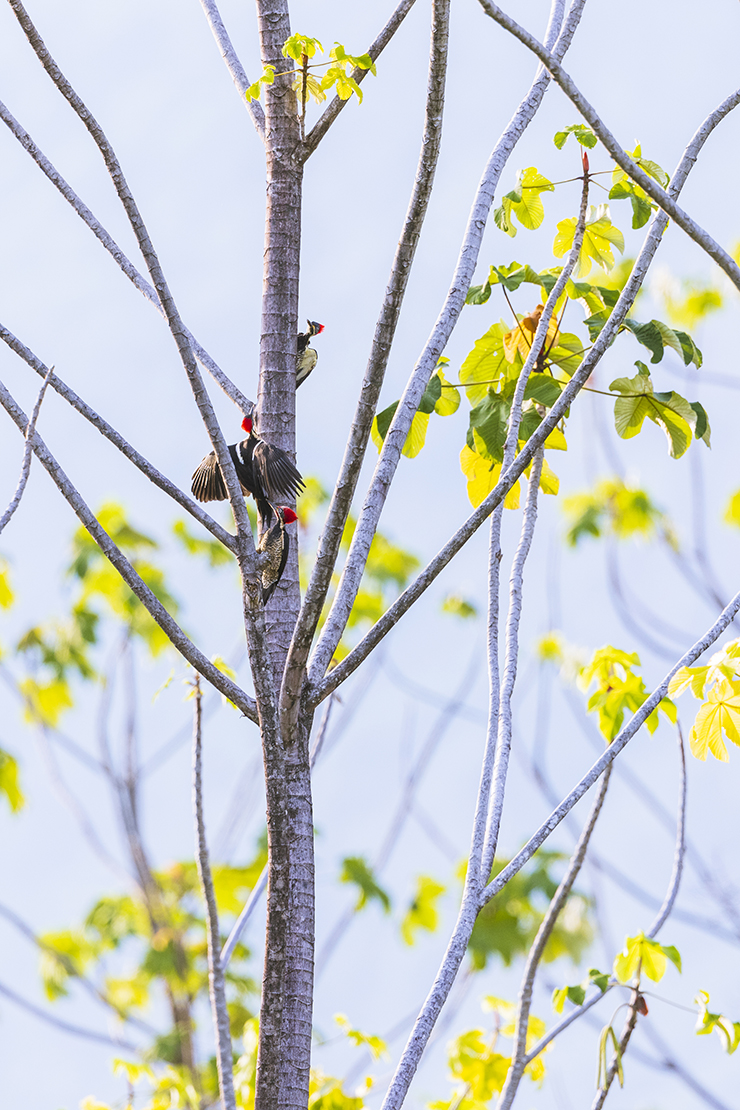
This small group of Lineated Woodpeckers were deeply engaged in some form of discussion. Over what, I can’t say for sure.
The harsh, raking calls of large macaws then drew our attention even further in the distance. Silhouetted over the mountain range against the rising sun was a pair of Red-and-green Macaws. These massive macaws seem to fly quite lazily, their flapping akin to the laboured crawling of something too large to be moving. Fortunately, they were headed in my direction, so I had the luxury of time to ponder all of this while waiting for them to drift within firing range.
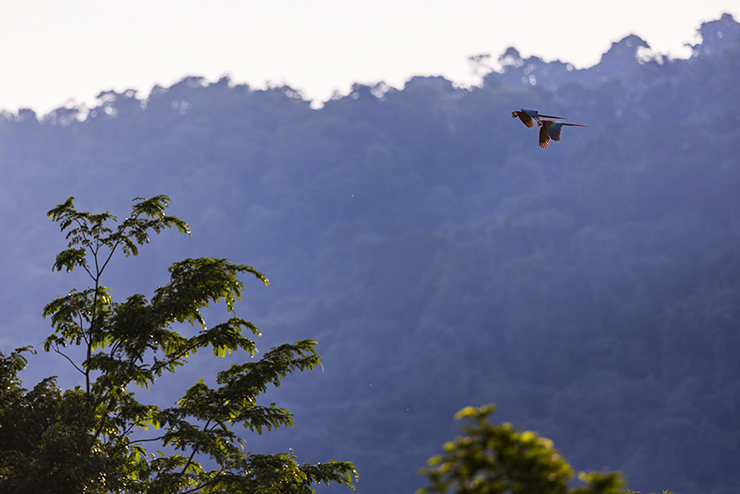
Red-and-green Macaw
Nearer afield there were several smaller birds taking advantage of many of the culinary options available. Seeding grasses attracted Yellow-bellied and Grey Seedeaters, while a tree on the opposite side of the road was in the height of its fruiting phase and thus festooned with a cornucopia of frugivores: Blue Dacnis, Burnished-buff Tanager, Palm Tanager, Silver-beaked Tanager, Spectacled Thrush, and even a Tropical Gnatcatcher was seen in the mix. Although admittedly the gnatcatcher was likely not participating in the berry bonanza but seeking sustenance from disturbed arthropods.
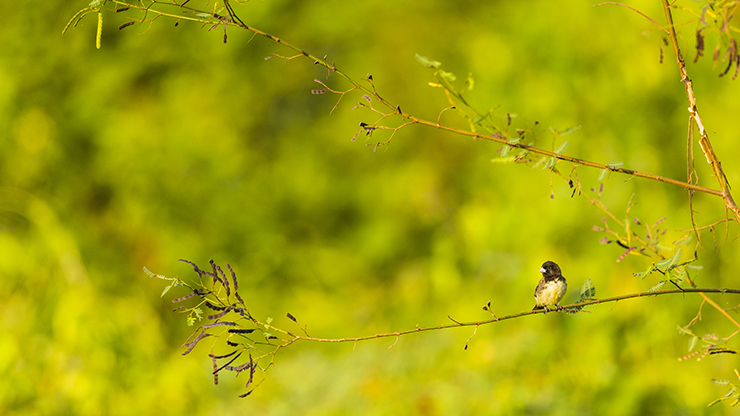
Yellow-bellied Seedeater
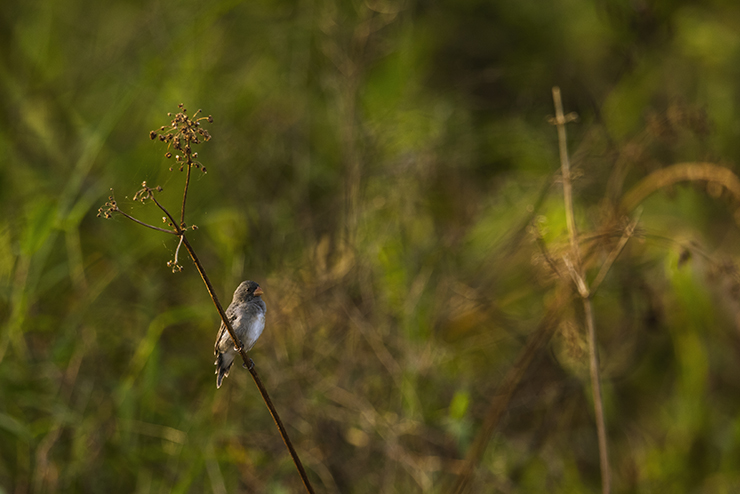
Grey Seedeater
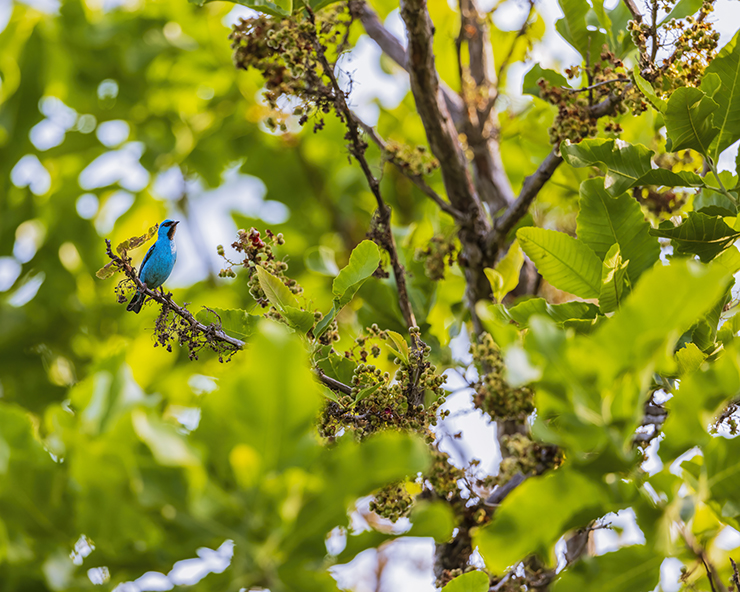
Blue Dacnis
A short walk further along that road ultimately led to a fateful bend in the road, beyond which there was a field of flowering plants which attracted numerous hummingbirds including a very familiar Ruby-topaz Hummingbird, battling with a less familiar Glittering-throated Emerald. All this unfolding in front of an attentive Blue-tailed Emerald. I know, it sounds like I just made that entire sequence up.
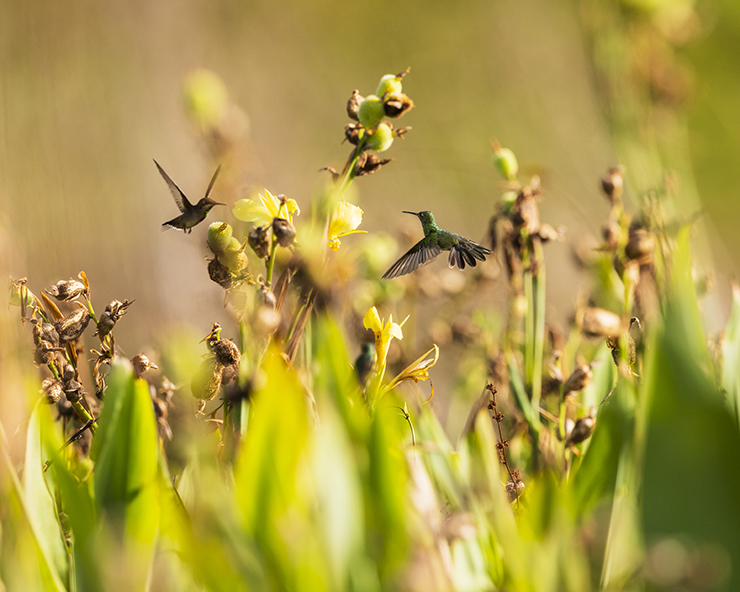
O! Ye of little faith! Ruby-topaz Hummingbird on the left, Glittering-throated Emerald on the right, the out-of-focus blob in the lower centre of the frame is the Blue-tailed Emerald.
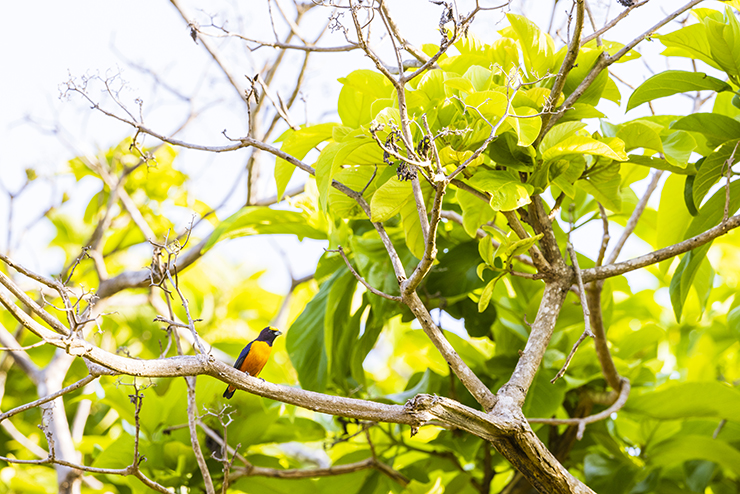
Overhead, a pair of Finsch’s Euphonia perched briefly.

I was excited to land my first Laughing Falcon, a charismatic species that I had been drooling over for years.
Our local guide at that point proffered an opportunity to visit a lek he was familiar with nearby. A lek of which species? Glad you asked – it was a Guianan Cock-of-the-rock lek. A short drive followed by a twenty minute walk; I signed up immediately. Readers of my last post here would be familiar with the writer missing this species after visiting a known lek. And so we got in the vehicle and followed the directions provided.
The roadway eventually narrowed, and ultimately became moderately harrowing, with swathes of dirt interspersed by large rocks that looked as if they had been thrown into the soft soil with great anger by an abnormally brawny man. While navigating this terrain, we flushed an Amazonian Motmot that was on the road. After trying my best to photograph it in the dimly lit understory, it flew further away to a higher perch. Although I was happy with the pictures I had already gotten, I noticed that it was not alone on the new perch.
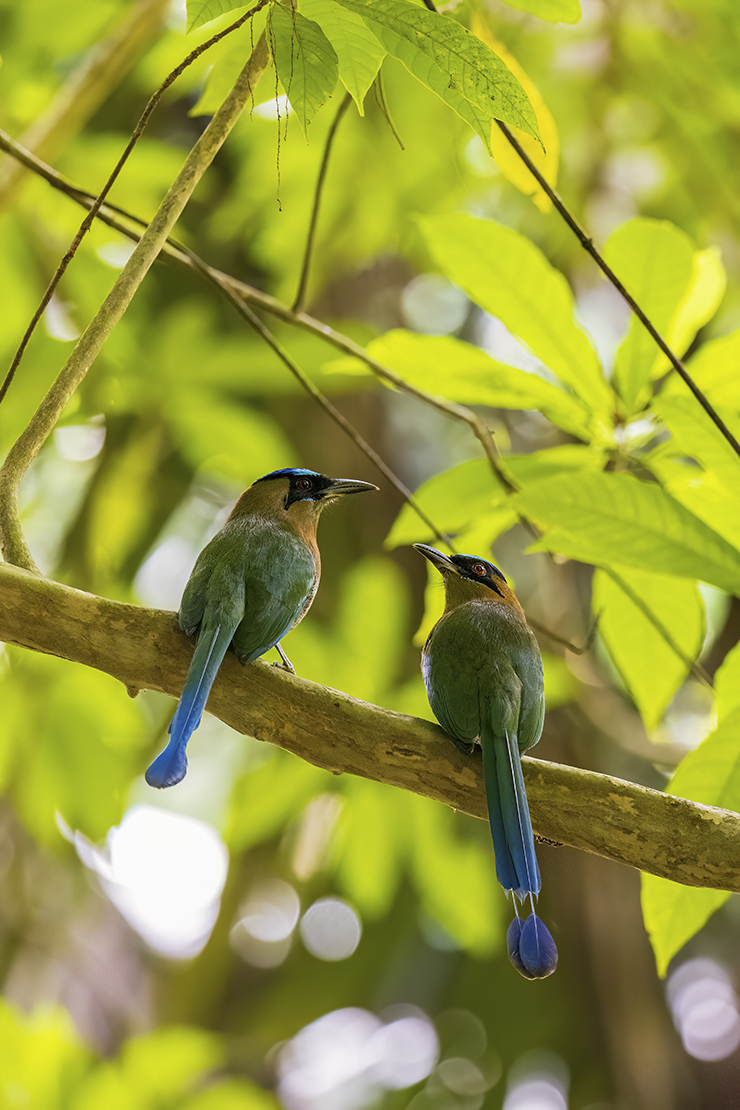
What’s better than a motmot? Two motmots, naturally. Amazonian Motmot.
What followed this sighting involved clambering over gigantic rocks, walking calmly on a makeshift bridge over swiftly running water, and then hiking uphill for the allotted twenty minutes. Once we arrived at the predetermined location, we got comfortable – I was now familiar with the procedure – and waited.
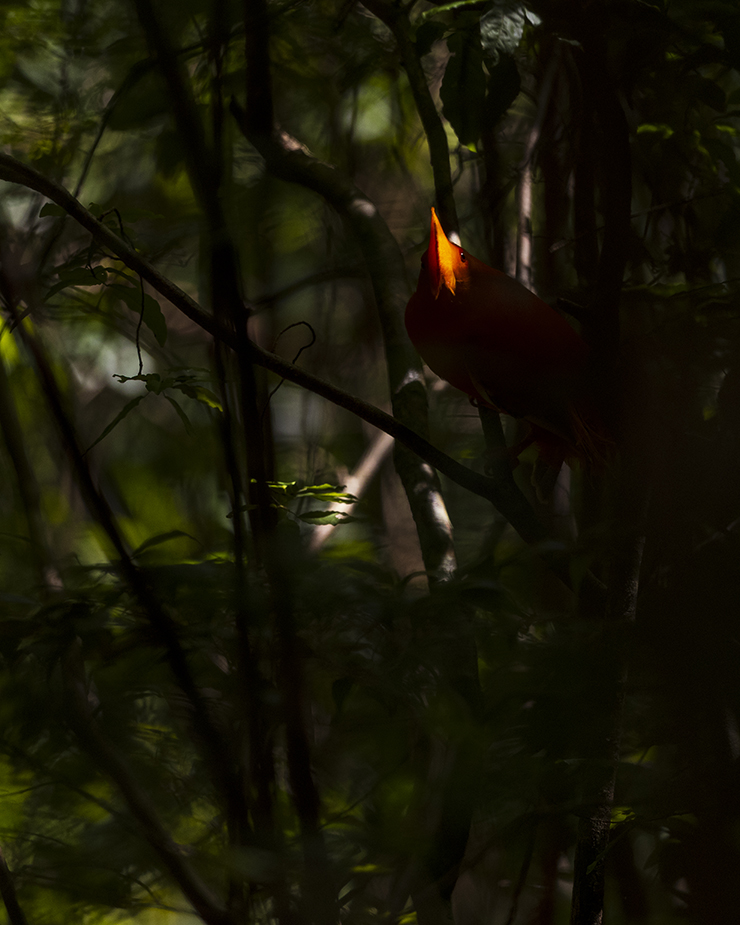
A flash of orange in the distance betrayed the presence of one of the most coveted birds on this entire planet. The first Guianan Cock-of-the-rock of the trip!
The two or three males we saw at this lek were quite shy, and largely kept to themselves in the distant tangles of the dry vegetation. I was arguably more fortunate, however, when an adult female showed up. I had to bend light around a tree trunk to get a clear view – but there she was in all her chocolate brown glory.
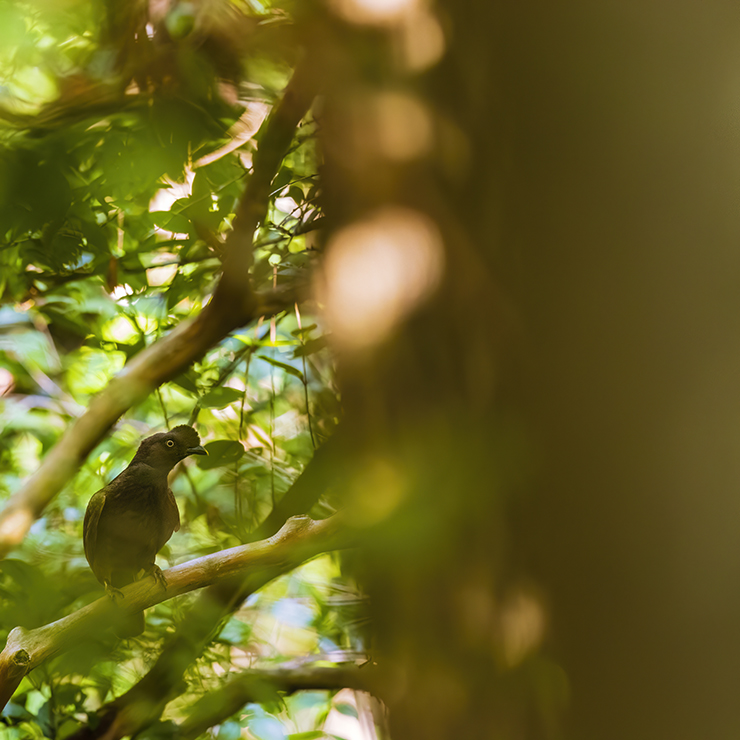
Guianan Cock-of-the-rock – or is it Hen-of-the-rock?
The hills of Moco-moco held one final surprise which blew our socks off on the way out. As we were almost back to the vehicle, we spotted a medium-sized, black and white raptor. Within moments of being sighted, it took off. We had no clue what it was, as its proportions did not fit any of the expected birds of prey. We searched for a few more minutes, but to no avail. As hope was drifting away, we saw it again! The bird had taken to the air, ascending on great arcs while affording us unobstructed views. It was a new bird for the area, at least for Leon: a Hook-billed Kite.
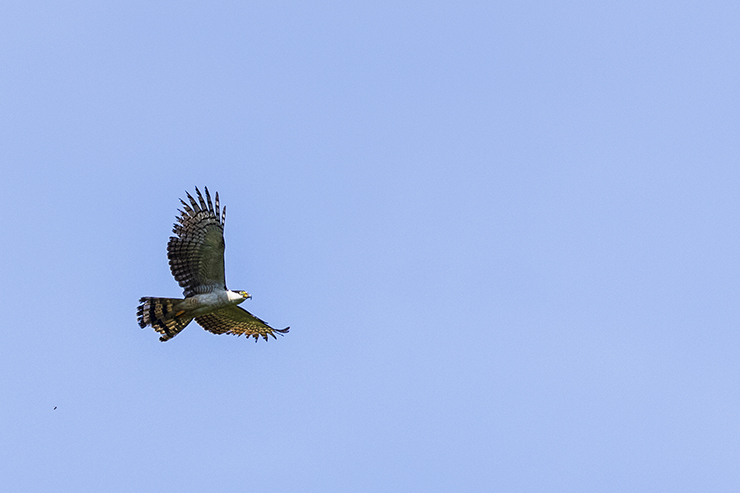
This Hook-billed Kite made our brains go a little faster than usual as it was an immature bird and was not in the most distinctive of plumages.
Unbelievably, after seeing over 70 species, it was not yet noon. Nevertheless, we elected to return to our lodge for some shade and a brief siesta before our afternoon session.








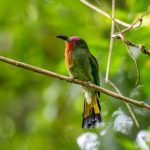
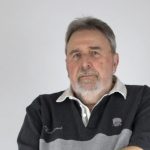
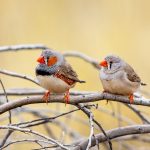


Great photos!
Great photos, indeed, Faraaz!
I imagine you may have already been told that in Spanish, Moco-Moco would mean Snot-Snot. Sound like me on a bad allergy day.
Many thanks!
And no, I had no clue what it meant in Spanish. Makes me consider a different take on this post…
Thank you, Nick!